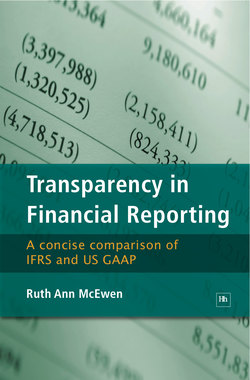Читать книгу Transparency in Financial Reporting - Ruth Ann McEwen - Страница 7
На сайте Литреса книга снята с продажи.
2. Transparency of the Balance Sheet: Fair Valuation A. Fair valuation under alternative market assumptions
ОглавлениеMuch of the current controversy regarding full adoption of IFRS for US GAAP entities rests on the relation between fair valuation and financial reporting transparency. International Accounting Standard No. 18 (IAS 18) defines fair value as, ‘the amount for which an asset could be exchanged, or a liability settled, between knowledgeable, willing parties in an arm’s length transaction.’ [12] FASB’s Codification [13] Master Glossary provides two similar definitions, stating that fair value represents, ‘the amount at which an asset (or liability) could be bought (or incurred) or sold (or settled) in a current transaction between willing parties, that is, other than in a forced or liquidation sale,’ and ‘the price that would be received to sell an asset or paid to transfer a liability in an orderly transaction between market participants at the measurement date.’ The first FASB definition was introduced as part of CON 7 and the second was provided in FAS 157. Note that these definitions imply active participants with available market prices.
But how are assets and liabilities valued if market prices are not available? FAS 107 identifies alternatives:
Quoted market prices, if available, are the best evidence of the fair value of financial instruments. If quoted market prices are not available, management’s best estimate of fair value may be based on the quoted market price of a financial instrument with similar characteristics or on valuation techniques (for example, the present value of estimated future cash flows using a discount rate commensurate with the risks involved, option pricing models or matrix pricing models).
FAS 157 identifies three valuation techniques that are to be consistently applied in estimating fair value:
1 The market approach uses prices and other relevant information generated by market transactions involving identical or comparable assets or liabilities;
2 The income approach uses valuation techniques (including present value techniques, option-pricing models such as the Black-Scholes-Merton formula, and the multi-period excess earnings method which reflects a discounted cash flow method used to estimate the fair value of certain intangible assets) to convert future amounts, for example, cash flows or earnings, to a single present discounted amount;
3 The cost approach which is based on the amount that currently would be required to replace the service capacity of an asset (often referred to as current replacement cost).
